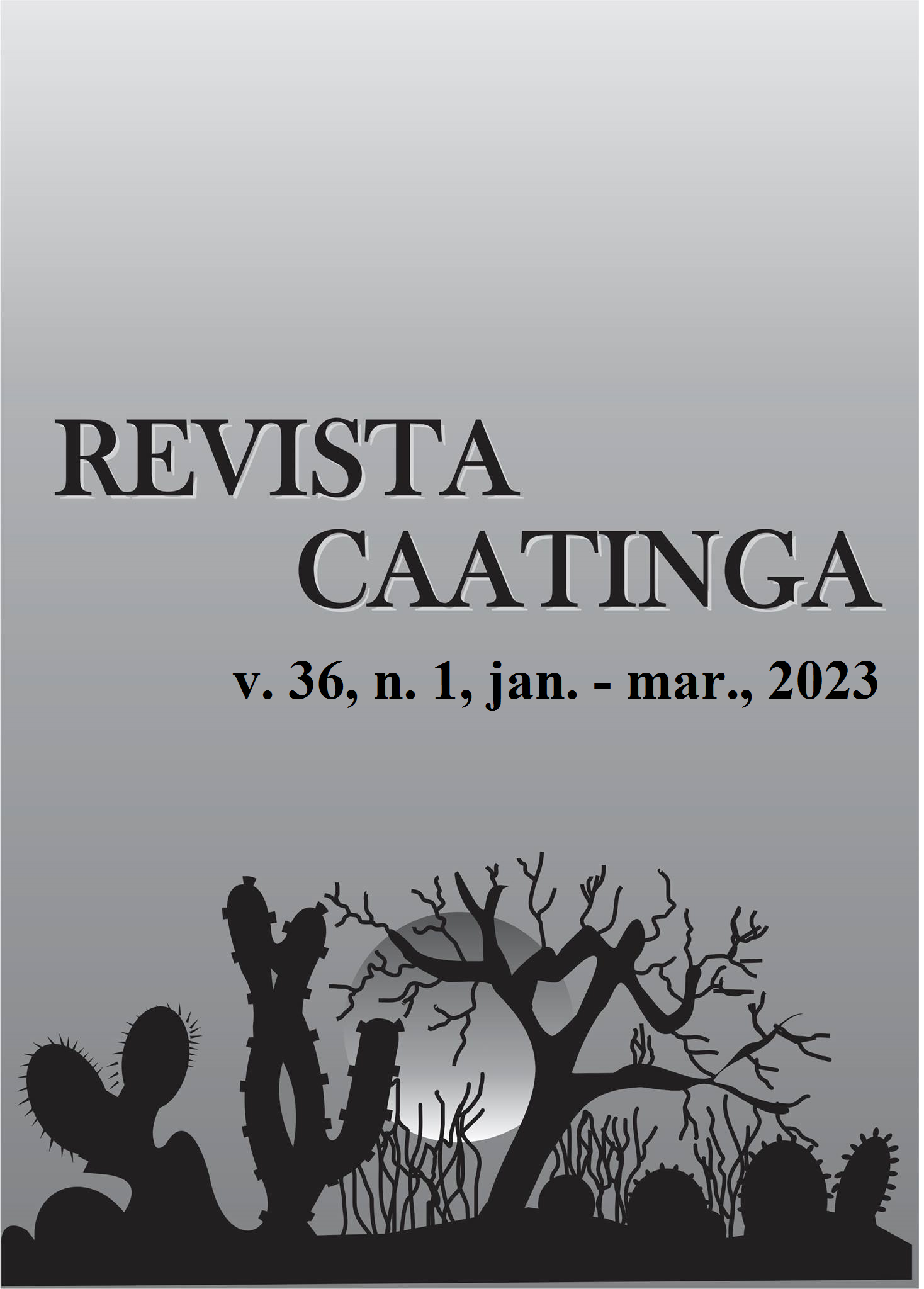Ornamental cherry tomatoes in different protected environments and reflector materials in cultivation Bench
DOI:
https://doi.org/10.1590/1983-21252023v36n102rcKeywords:
Microclimatic conditions. Radiation. Shading. Luminosity.Abstract
The study aimed to evaluate the growth of ornamental cherry tomato plants in different protected environments and reflective materials on the cultivation benches. As there were no repetitions of the protected environments, each environment was considered an experiment. In each environment, the experimental design used was completely randomized with five replications and three plants per plot. From the analysis of individual variances and evaluation of the mean squares of residues smaller than seven, the joint analysis of variance was performed (three protected environments x three reflective materials on the cultivation bench + 1 control without material). The protected environments evaluated were the agricultural greenhouse with a screen of 42-50% shading under the film, the agricultural screenhouse with a black screen of 30% shading, and the agricultural screenhouse with an aluminized screen of 35% shading. The reflective materials on the cultivation bench were Aluminet®, white Formica laminate, and red Formica laminate. The different protected environments influenced the growth of plants, and due to the lower incident light, the plants showed greater height in the agricultural greenhouse (42-50% shading). The reflective benches did not interfere with plant height but favored fruit production. The agricultural greenhouse (42-50% shading)) stands among the environments. For the reflective materials on the bench, aluminized fabric and red Formica laminate stood out, as they favored the growth of cherry tomato plants with desirable ornamental traits, such as greater fruit production.
Downloads
References
BANZATTO, D. A.; KRONKA, S. N. Experimentação agrícola. 4. ed. Jaboticabal, SP: Funep, 2013. 237 p.
BARROSO, P. A. et al. Analysis of segregating generation for components of seedling and plant height of pepper (Capsicum annuum L.) for medicinal and ornamental purposes. Acta Horticulturae, 953, 269-275, 2012.
CABRAL, R. C. et al. Material reflectante en bancos de cultivo y paja de arroz sobre el sustrato en la producción de plántulas de papaya. Revista Mexicana de Ciencias Agrícolas, 11: 1713-1723, 2020.
COSTA, E. et al. Growth of ornamental pepper in colored containers under protected environments. Agricultural Building and Environment. Engenharia Agrícola, 40: 581-588, 2020a.
COSTA, E. et al. Ambientes e substratos na formação de mudas e produção de frutos de cultivares de tomate cereja. Horticultura Brasileira, 33: 110-118, 2015.
COSTA, G. G. S. et al. Shading level, reflective material, and seeding depth on the growth of baru seedlings. Agricultural Engineering International: CIGR Journal, 22: 83-92, 2020b.
FERREIRA, D. F. SISVAR - Sistema de análise de variância. Versão 5.3. Lavras, MG: UFLA, 2010. 66 p.
FRANCA, R. J. F.; LEITÃO, M. M. V. B. R.; CAMPECHE, L. F. S. M. Produtividade do tomate cereja em ambiente protegido e céu aberto em função das lâminas e intermitências de irrigação. Revista Brasileira de Agricultura Irrigada, 11: 1364-1370, 2017.
HOLCMAN, E. Microclima e produção de tomate tipo cereja em ambientes protegidos com diferentes coberturas plásticas. 2009. 128 f. Dissertação (Mestrado em Ciências: Área de concentração em Física do Ambiente Agrícola) – Universidade de São Paulo, Piracicaba, 2010.
LIMA, A. H. F. et al. Pimenta ornamental em bancadas reflexivas colorida em diferentes ambientes protegidos em transição agroecológica. Cadernos de Agroecologia, 13: 1-10, 2018.
KERBAUY, G. B. Fisiologia vegetal. 2. ed. Rio de Janeiro, RJ: Guanabara Koogan, 2013. 431 p.
MOREIRA, B. P.; LOPES, S. A. O. R. Espécies nativas com potencial ornamental ocorrentes na bacia do rio taquarembó, RS. Congrega Urcamp, 15: 579-591, 2018.
MORTATE, R. K. et al. Levels of Shading and Reflective Material in Benches for Schizolobium amazonicum Seedlings. Journal of Agricultural Science, 11: 485-495, 2019.
PAULA, R. C. M. et al. Monitoramento de variáveis micrometeorológicas em diferentes ambientes protegidos no período de inverno. Revista de Agricultura Neotropical, 4: 103-109, 2017.
PEEL, M. C.; FINLAYSON, B. L., T. A. MCMAHON. Updated world map of the Köppen-Geiger climate classification. Hydrology and Earth System Sciences, 4: 1633-1644, 2007.
RODRIGUES, V. G. S.; GONZAGA, D. S. O. M. Preparo de receitas para o combate e controle de pragas com plantas medicinais. 4. ed. Porto Velho, RO: Embrapa Rondônia, 2001. 2 p.
SALLES, J. S.; LIMA, A. H. F.; COSTA, E. Mudas de jambolão sob níveis de sombreamento, bancadas refletoras e profundidade de semeadura. Revista de Agricultura Neotropical, 4: 110-118, 2017.
SANTOS, T. V. et al. Produção de mudas de maracujá amarelo com diferentes materiais refletores sobre bancada. Revista de Agricultura Neotropical, 4: 26-32, 2017.
TAIZ, L. et al. Fisiologia e desenvolvimento vegetal. 6. ed. Porto Alegre, RS: Artmed, 2017. 888 p.
Downloads
Published
Issue
Section
License
Os Autores que publicam na Revista Caatinga concordam com os seguintes termos:
a) Os Autores mantêm os direitos autorais e concedem à revista o direito de primeira publicação, com o trabalho simultaneamente licenciado sob a Licença Creative Commons do tipo atribuição CC-BY, para todo o conteúdo do periódico, exceto onde estiver identificado, que permite o compartilhamento do trabalho com reconhecimento da autoria e publicação inicial nesta revista, sem fins comerciais.
b) Os Autores têm autorização para distribuição não-exclusiva da versão do trabalho publicada nesta revista (ex.: publicar em repositório institucional ou como capítulo de livro), com reconhecimento de autoria e publicação inicial nesta revista.
c) Os Autores têm permissão e são estimulados a publicar e distribuir seu trabalho online (ex.: em repositórios institucionais ou na sua página pessoal) a qualquer ponto antes ou durante o processo editorial, já que isso pode gerar alterações produtivas, bem como aumentar o impacto e a citação do trabalho publicado (Veja O Efeito do Acesso Livre).







